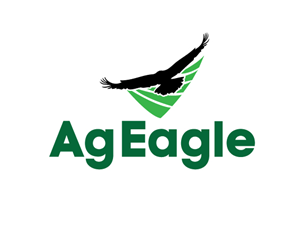Podcast: Play in new window | Download

Yep, that’s a chunk that broke off this magneto’s mounting flange. And as we talk about in today’s episode, when that mag fell out of the back of the engine, the airplane immediately became a glider.
So, are these “dual magnetos” a good idea, or a bad idea? I’m sure there are lots of opinions, and I’ve got one too. But don’t take my word for it… do your own research, and see what conclusion you arrive at.
Here’s the difference between the old style magneto attaching clamps in the bottom of these pictures, compared to the much better attaching clamps in the tops of the pictures.


In today’s podcast, we discuss 4 different stories related to this issue of “dual magnetos.”
The picture at the top of this post is the dual magneto from this Piper that had to land in a field back in 2008. Thankfully, there was minimal damage, but a landing gear door was also damaged in addition to needing a magneto. And since this particular airport had minimal maintenance facilities available, we ended up fixing everything outside… not the most ideal, but we got the job done!

Another story is of a Mooney I worked on and found the wrong gasket installed on the dual magneto, and the mounting nuts undertorqued.
And one more story of another Mooney, and the accident report from the dual magneto failure… thankfully, only minor injuries in that accident.
Finally, my most recent reminder of how critical it is to install dual magnetos correctly, is this Piper Lance. Listen to the podcast to find out why this airplane would not develop full power, and the EGT’s were ridiculously high for such a low power setting.

So, if you have a dual magneto (2 mags in one case, driven by one gear,) here are some recommendations to consider, so that you can operate as safely and reliably as possible:
-
- Make sure the correct gasket is installed. P/N LW-12681, a round gasket. (Not an oblong gasket with holes, for mags that have flanges.)
-
- Be sure the correct attachment clamps are installed. Take a look at the pictures for the old style clamps and new style… make sure you have the new style, P/N 66M19385. They are easily identified by the oblong ends, that cover more surface area where they contact the magneto flange.
-
- Be sure the torque is proper. Ask your mechanic what torque was used for the magneto attaching nuts. Last time I checked, it was 204 inch pounds… I’ve found numerous mag attach nuts undertorqued. By the way, if your mechanic gets offended when you ask this question, it might be time to go somewhere else. I welcome this kind of question… after all, your safety and the safety of your passengers, depends on it!
-
- Be sure there is torque putty on the attaching nuts, and check it frequently, to look for any movement. My favorite is Fluorescent yellow.
-
- Do the recommended 500 hour magneto inspections. Make sure it’s done by a reputable shop… we either send mags out, or get an exchange one. Don’t take chances with such a critical component.
-
- Consider modifying your engine to 2 single magnetos, especially at overhaul.
-
- For me personally, don’t buy an airplane with a dual magneto… just my opinion.
- Print and keep these 2 documents with your maintenance records, and hand them to your mechanic whenever you are having dual magneto maintenance done.
Lycoming Service Instruction 1508C:
https://www.lycoming.com/sites/default/files/Dual%20Magneto%20Attachment.pdf
Special Airworthiness Information Bulletin (SAIB) NE-08-26R2 :
https://www.askbob.aero/sites/default/files/ne-08-26r2.pdf
And, one more article if you want to dig a little deeper and learn a little more about dual magnetos:
http://mechanicsupport.blogspot.com/2008/08/bendix-d3000-magneto-redundancy.html
Finally, if you are interested in learning more about how CHT’s and EGT’s are related to mag timing, check out some of Mike Busch’s excellent articles at SavvyAnalysis.com
Let me know what you think about today’s episode… whether you agree with me or not, I’d like to hear from you, so please contact me with your thoughts.
Email: dean@airplaneownermaintenance.com
Or, leave a comment on this page, or even better yet, leave me a voice message by clicking the button over to the right.
And if you appreciate the podcast, please leave a rating and review over at iTunes.
Thanks, and have a great weekend!




























Recent Comments